Fall Trees With The Best Color For Your Yard
We have put together a list of trees that will deliver the biggest burst of bold, bright colors during the fall to help you choose which trees are best for your landscape.
As we move from the summer to the autumn months, it may be hard to let go of those warmer days, but with the upcoming colorful fall leaves, there’s a lot to look forward to.
One of the best things about the fall season is watching as the color changes from green leaves to red, yellow, and orange leaves.
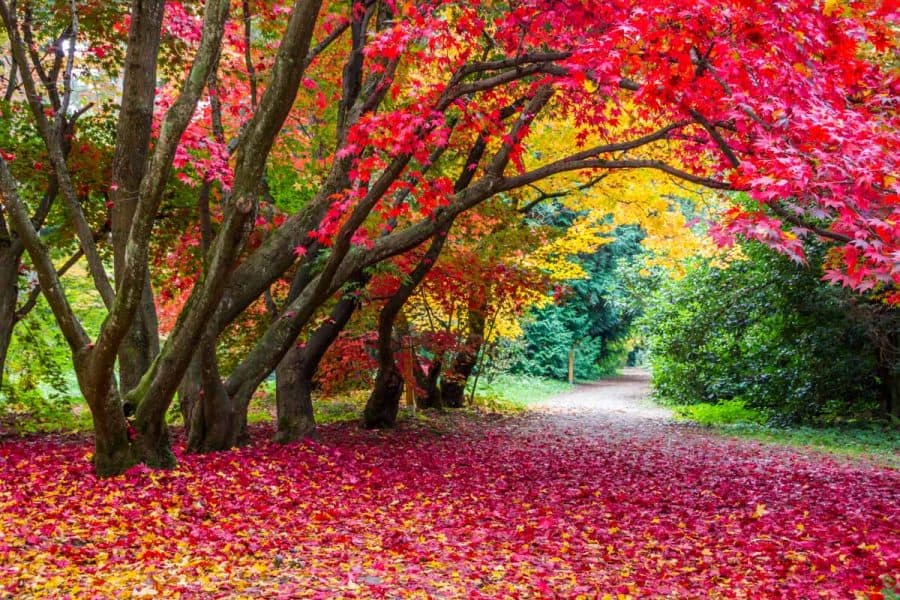
Taking a trip to the best leaf-peeping destinations is one great way to experience this time of year but if you want to enjoy them on a smaller scale, consider planting some fall trees with vibrant colors in your own yard.
There are so many tree species out there, and it can be a bit overwhelming to decide on the best colorful trees for your situation.
These 15 trees have best fall color to get you started.
The Best Fall Trees For Color
- Sugar maple
- Red maple
- Japanese maple
- Black gum or Tupelo
- Witch hazel
- Ginkgo
- Shadblow serviceberry
- River Birch
- American sweetgum
- Northern red oak
- Oakleaf hydrangea
- Sourwood
- White oak
- Bald cypress
- Flowering dogwood
They do well in a wide range of climate zones and include a decent variety of fast-growing vs. slow-growing trees, best for smaller spaces to larger trees.
Despite their differences, the best fall trees all have one thing in common come leaf season – beautiful fall color that creates a fall fiesta.
1. Sugar Maple
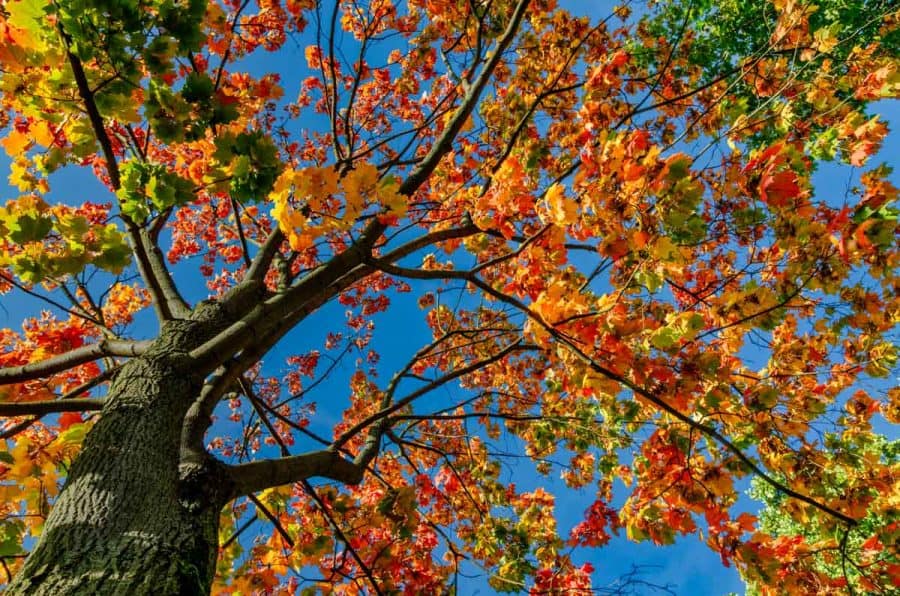
Latin Name: Acer saccharum
Soil Conditions: medium moisture, well-drained soil
Light Conditions: full sun to partial shade
Size: 40 to 80 feet tall
USDA Growing Zones: 3 to 8
Leaf Color: yellow, orange, and red
If you love seeing fall foliage, chances are you’ve seen plenty of these native trees of North America. Maple trees are just about everywhere.
Not only is it the leaf of the maple tree Canada’s emblem, but it’s also the state tree of New York, West Virginia, Wisconsin, and Vermont and is one of the most well-known ornamental trees.
This is a relatively slow-growing tree that turns into a beautiful large tree. The sugar maple produces red, orange, and yellow fall foliage, and individual trees can differ year to year.
The thing that makes sugar maple unique to any other maple tree is its ability to produce sap that is then tapped and boiled down to make maple syrup.
2. Red Maple
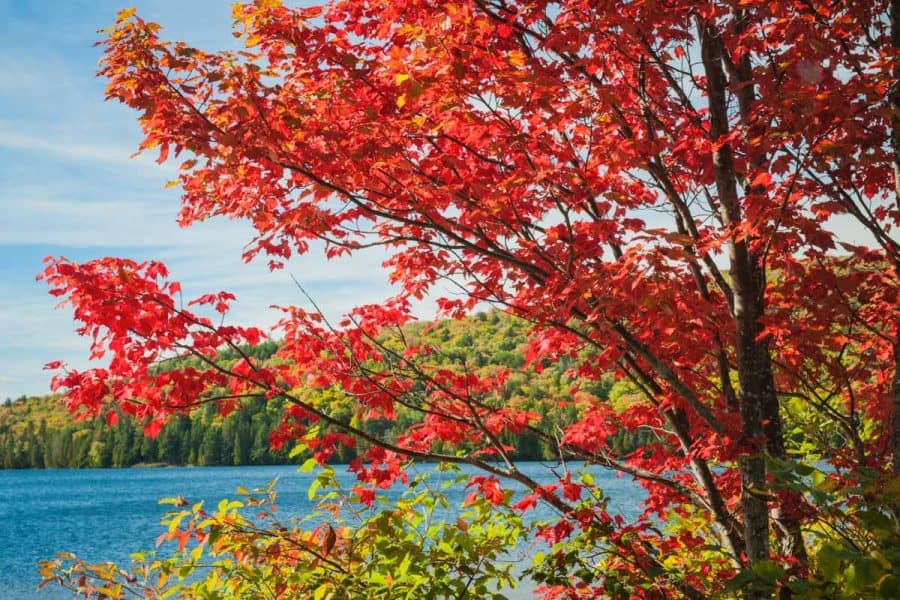
Latin Name: Acer rubrum
Soil Conditions: medium to wet soil
Light Conditions: full sun to partial shade
Size: 30 to 50 feet tall
USDA Growing Zones: 3 to 9
Leaf Color: deep red or yellow
The red maple isn’t just red in the fall, but it’s red in all seasons. Or at least part of it is.
Great autumn color is matched with red flowers in the spring, leafstalks in the summer, and buds in the winter.
The red maple is a popular choice due to its fast growth, tolerance to a variety of soils, and its year-round color.
3. Japanese Maple

Latin Name: Acer palmatum
Soil Conditions: rich, moist soil; prefers slightly acidic soils
Light Conditions: full sun to partial shade
Size: 10 to 25 feet tall
USDA Growing Zones: 5 to 8
Leaf Color: reddish-purple
If you’re looking for a short tree for your yard, the ‘Crimson Queen’ Japanese maple is a dwarf-type tree with weeping foliage and colorful leaves.
4. Black Gum or Black Tupelo
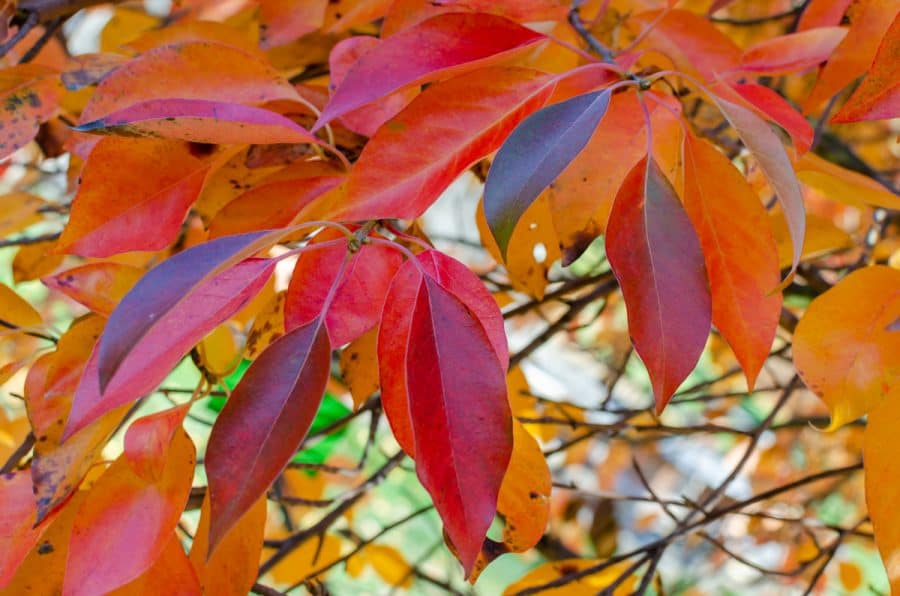
Latin Name: Nyssa sylvatica
Soil Conditions: medium to wet soil
Light Conditions: full sun to partial shade
Size: 30 to 50 feet tall
USDA Growing Zones: 4 to 9
Leaf Color: red
The black gum tree, also known as black tupelo, goes from glossy green leaves to shiny autumn colors, including yellow, orange, red, and purple.
Additionally, this tree doesn’t just tolerate wet soil but is adaptable to standing water.
And humans aren’t the only ones that enjoy this one – birds love the blackish fruits it produces, and it acts as an important late-spring, early fall food source for bees.
5. Witch Hazel
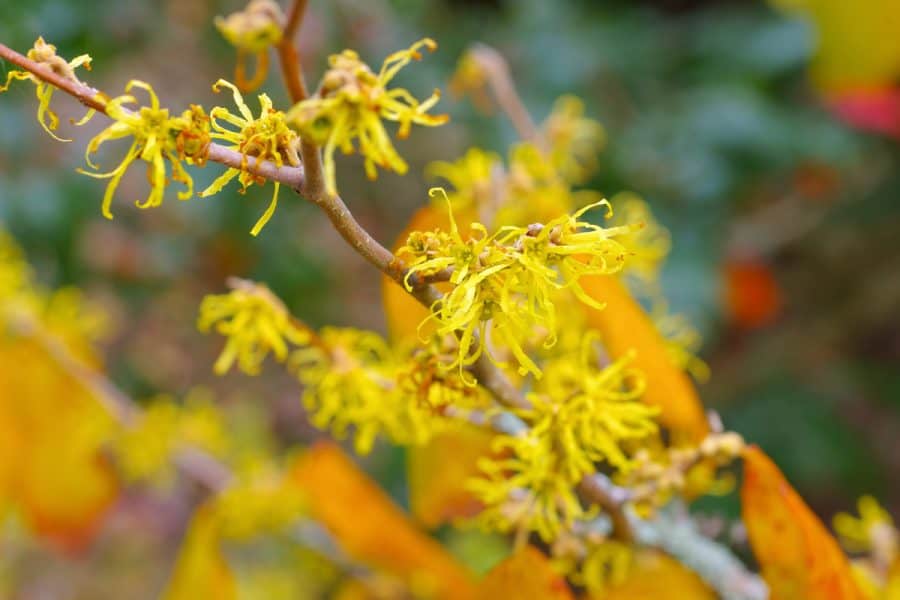
Latin Name: Hamamelis virginiana
Soil Conditions: prefers moist, well-drained soil but can tolerate a variety of soils.
Light Conditions: full sun to full shade
Size: 15 to 30 feet tall
USDA Growing Zones: 3 to 8
Leaf Color: yellow
Witch hazel transforms into bright yellow leaves in the fall. This one is very versatile and can be planted as a large shrub or small tree.
6. Ginkgo

Latin Name: Ginkgo biloba
Soil Conditions: moist, well-drained soil
Light Conditions: sun to shade
Size: up to 100 feet tall
USDA Growing Zones: 3 to 8
Leaf Color: yellow
Ginkgos are a bit slow-growing, but roughly 100 feet make up for it. The ginkgo is a great, elegant-looking shade tree with fan-shaped leaves that turn a beautiful golden yellow in the fall.
It is also one of the few deciduous trees that can drop its leaves overnight.
Native to Japan, this vibrant tree establishes itself very well in the United States. Moreover, it does well in urban and unfavorable conditions.
7. Shadblow Serviceberry
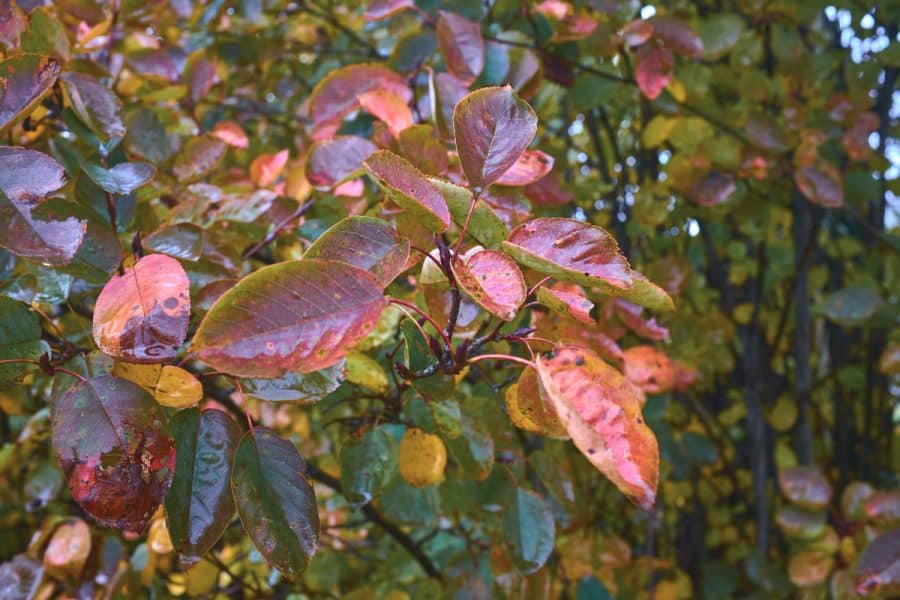
Latin Name: Amelanchier canadensis
Soil Conditions: well drained soil; tolerant of a wide range of soils
Light Conditions: full sun to part shade
Size: 25 to 30 feet
USDA Growing Zones: 4 to 8
Leaf Color: orange-red
Before this delicate tree turns orangey-red in the fall, it has white flowers in the spring, contrasted against dark green leaves, and produces edible purple-black fruits.
This makes a great addition if you’re looking for garden plants.
8. River Birch

Latin Name: Betula nigra
Soil Conditions: moist, well-drained soil; tolerates wet conditions well
Light Conditions: full sun to partial shade
Size: 40 to 70 feet tall
USDA Growing Zones: 4 to 9
Leaf Color: yellow
The river birch tree is a beautiful tree that produces a brilliant fall color. The beauty of the vibrant yellow leaves doesn’t stop there, though, as it also has a fascinating peeling bark all year round.
Despite loving to grow along riverbanks, this tree does well practically anywhere in the US.
9. American Sweetgum

Latin Name: Liquidambar styraciflua
Soil Conditions: medium moisture, well-drained soil; avoid alkaline soils
Light Conditions: full sun
Size: up to 80 feet tall
USDA Growing Zones: 5 to 9
Leaf Color: yellow, purple, and red mixture
Sweetgum trees show up prepared for autumn with their star-shaped leaves, seed pods, and a kaleidoscope of colors, including yellow, orange, red, and even purple (burgundy) that stay well into late autumn.
The seed pods are seen as fun to some, even being used as holiday ornaments, while many see them as a pain to clean up.
10. Northern Red Oak

Latin Name: Quercus rubra
Soil Conditions: well-drained soil
Light Conditions: full sun to partial shade
Size: up to 80 feet tall
USDA Growing Zones: 3 to 8
Leaf Color: red
True to its name, the northern red oak shows off its red leaves in the fall. However, red oaks tend to be late bloomers, as the color change doesn’t happen until late autumn
The payoff is that they stay on the branch longer than many other trees.
11. Oakleaf Hydrangea

Latin Name: Hydrangea quercifolia
Soil Conditions: rich moisture, well-drained soil
Light Conditions: full sun or light shade
Size: 4 to 8 feet tall
USDA Growing Zones: 5 to 9
Leaf Color: red, orange, and purple
Not quite a tree, this shrub turns a deep purple-red shade in the fall, and unlike the trees, they keep their color well into the winter season. This is also a good shrub for privacy.
The spring matches the fall with white flowers that evolve into pink flowers.
12. Sourwood
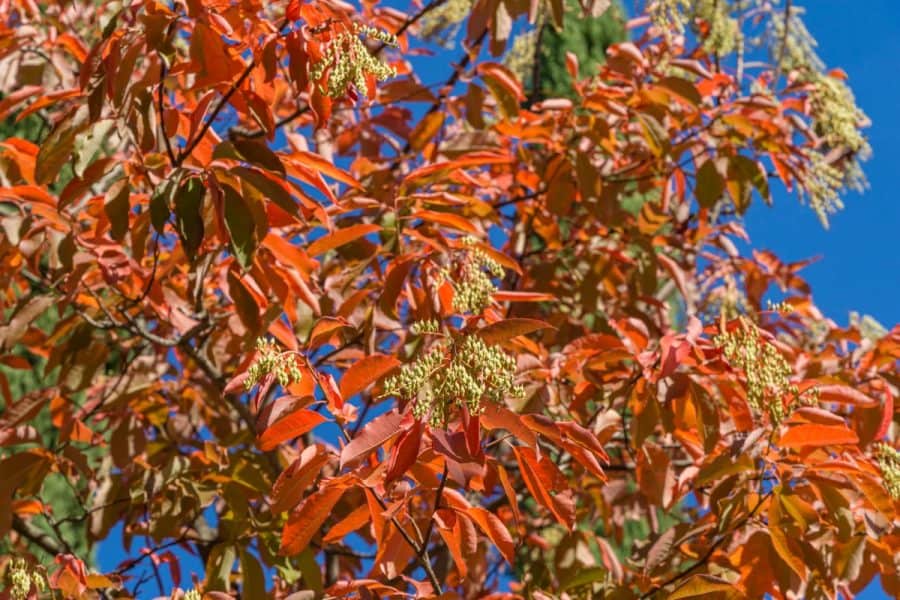
Latin Name: Oxydendrum arboreum
Soil Conditions: acidic, organically rich, well-drained soil
Light Conditions: full sun
Size: 20 to 50 feet tall
USDA Growing Zones: 5 to 9
Leaf Color: crimson red
This colorful tree has glossy green leaves. It blossoms in the summer with waxy, drooping white flowers that with a slight fragrance.
And in the fall, they transform into beautiful red trees.
13. White Oak
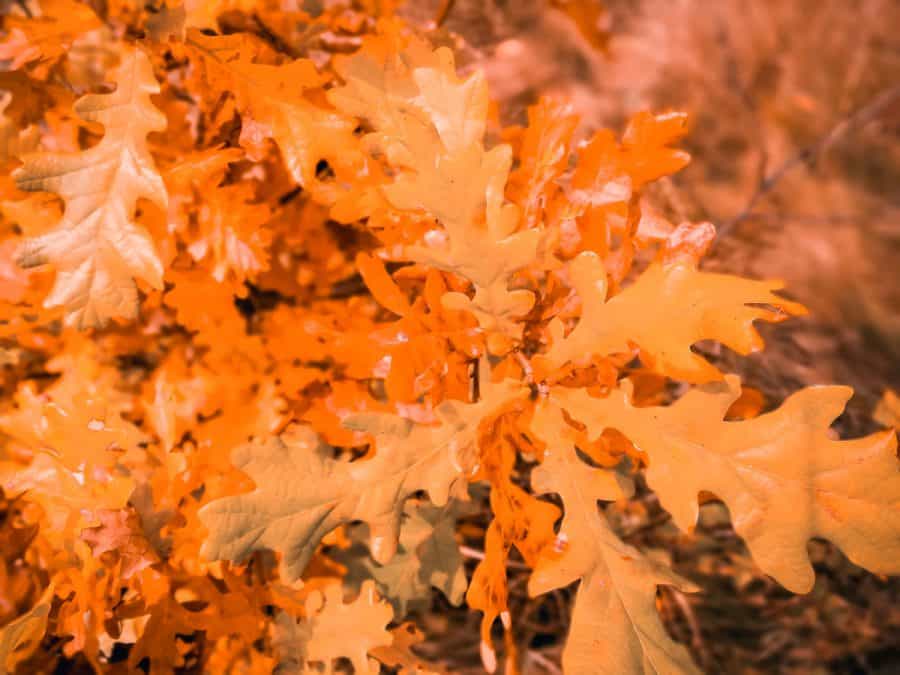
Latin Name: Quercus alba
Soil Conditions: rich moisture, well-drained soil
Light Conditions: full sun or light shade
Size: up to 80 feet tall
USDA Growing Zones: 3 to 9
Leaf Color: red
Grown in the open, the white oak tree grows into a massive broad tree with long branches and rounded lobed leaves.
This tree is tolerant of various habitats but is typically a lowland tree.
14. Baldcypress

Latin Name: Taxodium distichum
Soil Conditions: rich moisture, well-drained soil; adaptable to wet and dry conditions
Light Conditions: full sun
Size: up to 70 feet tall
USDA Growing Zones: 4 to 10
Leaf Color: orange/cinnamon brown
This tree makes itself at home in swamps and is a normal sight to see in southern swamps. Despite this, it does quite well in yards when planted in the correct soil.
If you want more fall inspiration, take a look at this post with DIY fall decor, and this one showing how to make gorgeous concrete coasters with fall leaves.
What trees turn red in autumn?
- Red maple
- Red oak
- Black cherry
- Kousa dogwood
- White oak
- Sourwood
- Sweetgum
- Black gum
- Black oak
- Bradford pear
- Scarlet oak
- Crape myrtle
- Paperbark maple
- Autumn blaze maple
What tree has purple leaves in the fall?
- Sweetgum
- Smoke tree
- Oakleaf hydrangea
- Eastern ninebark
- Virginia creeper
- Ornamental millet
- Pak choi
Which trees turn yellow in fall?
- Aspen
- American beech
- Tulip poplar
- Gingko
What kind of trees turn orange in the fall?
- Sugar maple
- Japanese persimmon
- Japanese maple
- Serviceberry
- Sumac
When’s the best time for planting fall trees?
Fall is actually the best time to plant most trees. In fall, trees require less watering, and because the soil is still warm, it promotes healthy root growth.
In the spring, the soil is actually colder and could cause shock to the root system.
You can read more here about how you can have trees that require less watering and other types of reduced maintenance by planting with native trees.
What trees can be planted in the fall?
In general, plants with fewer, larger roots are better off planted in the spring, while shallower, fibrous root systems are best planted in the fall. The best fall trees to plant include:
- Alder
- Ash
- Buckeye
- Catalpa (Catawba)
- Crabapple
- Hackberry
- Hawthorn
- Honey locust
- Elm
- Kentucky coffee tree
- Maple
- Sycamore
- Pines
- Spruces
And while enjoying your fall foliage, before the winter months come, you may want to start thinking about how you will keep your color and cheer during cold, dreary days. Here are 17 great, cold hardy plants that can be kept in pots outdoors during the winter.
Don’t forget to Pin it for later!




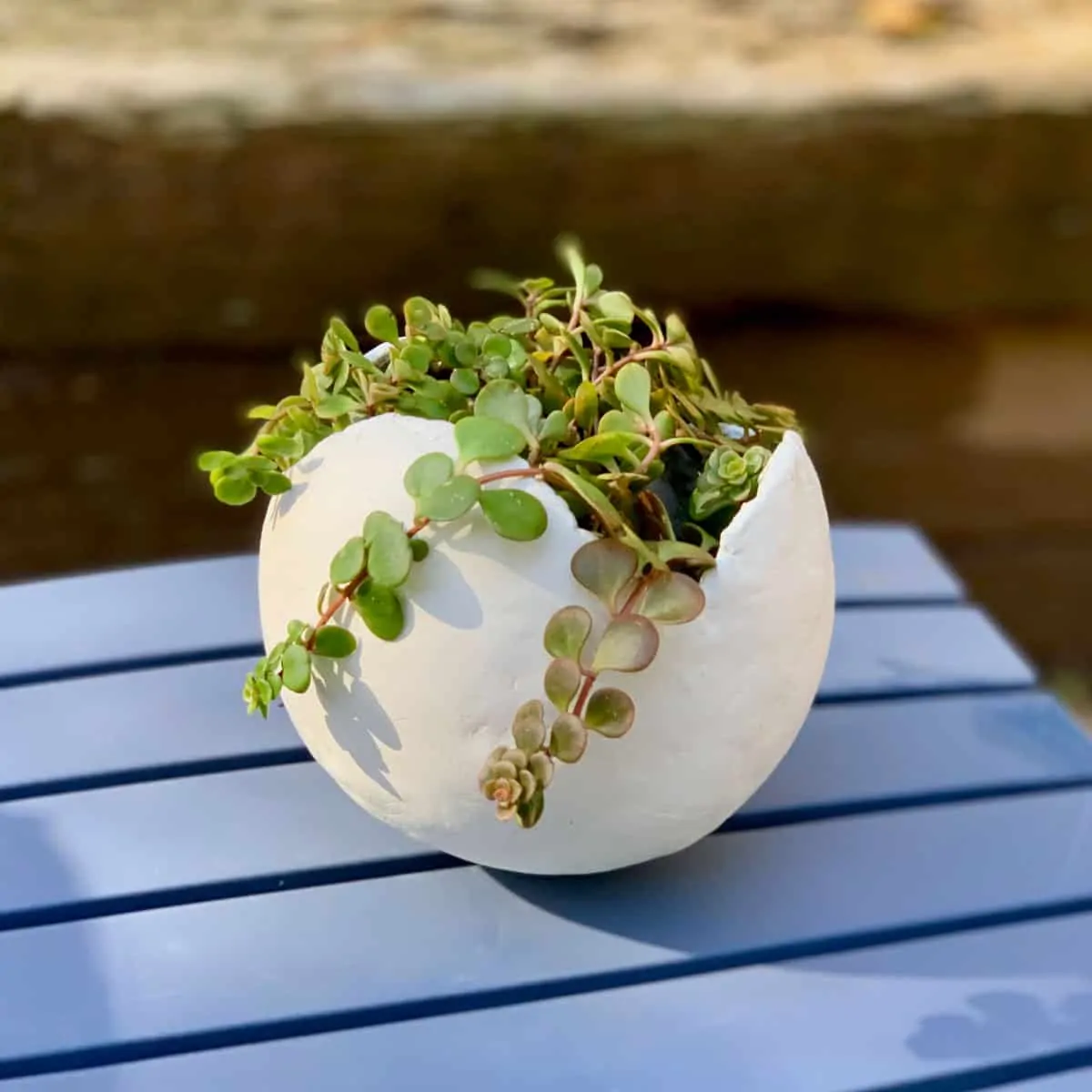
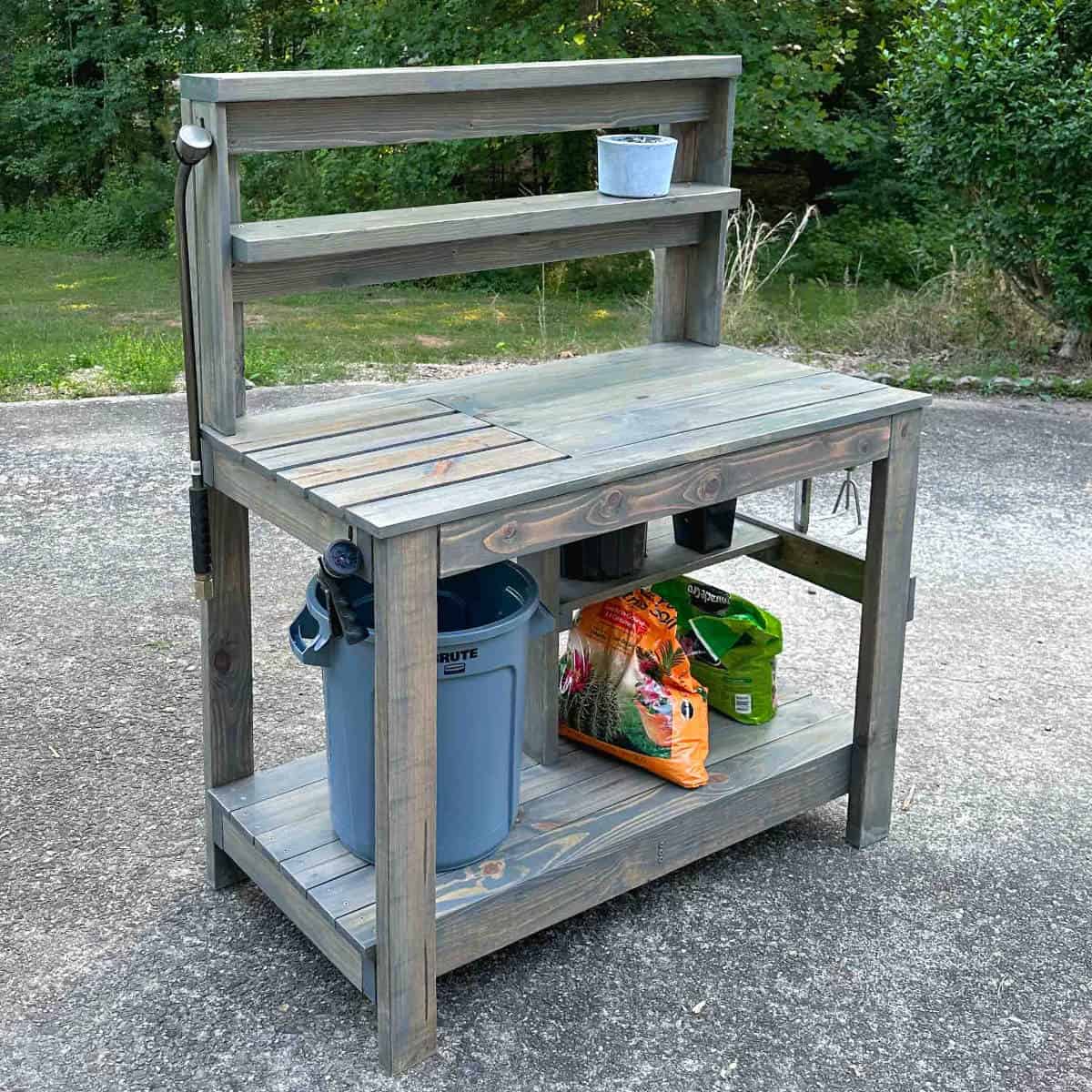
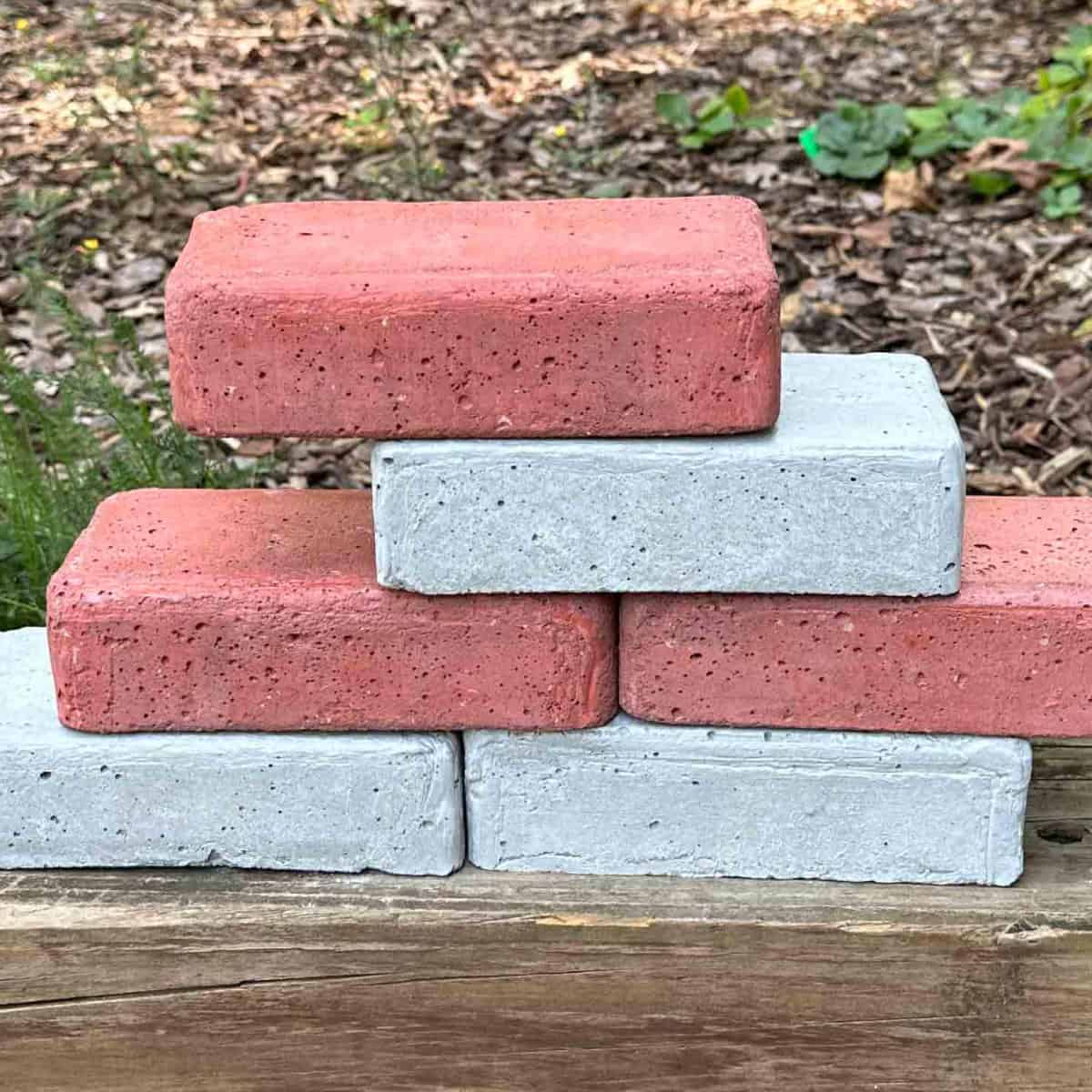

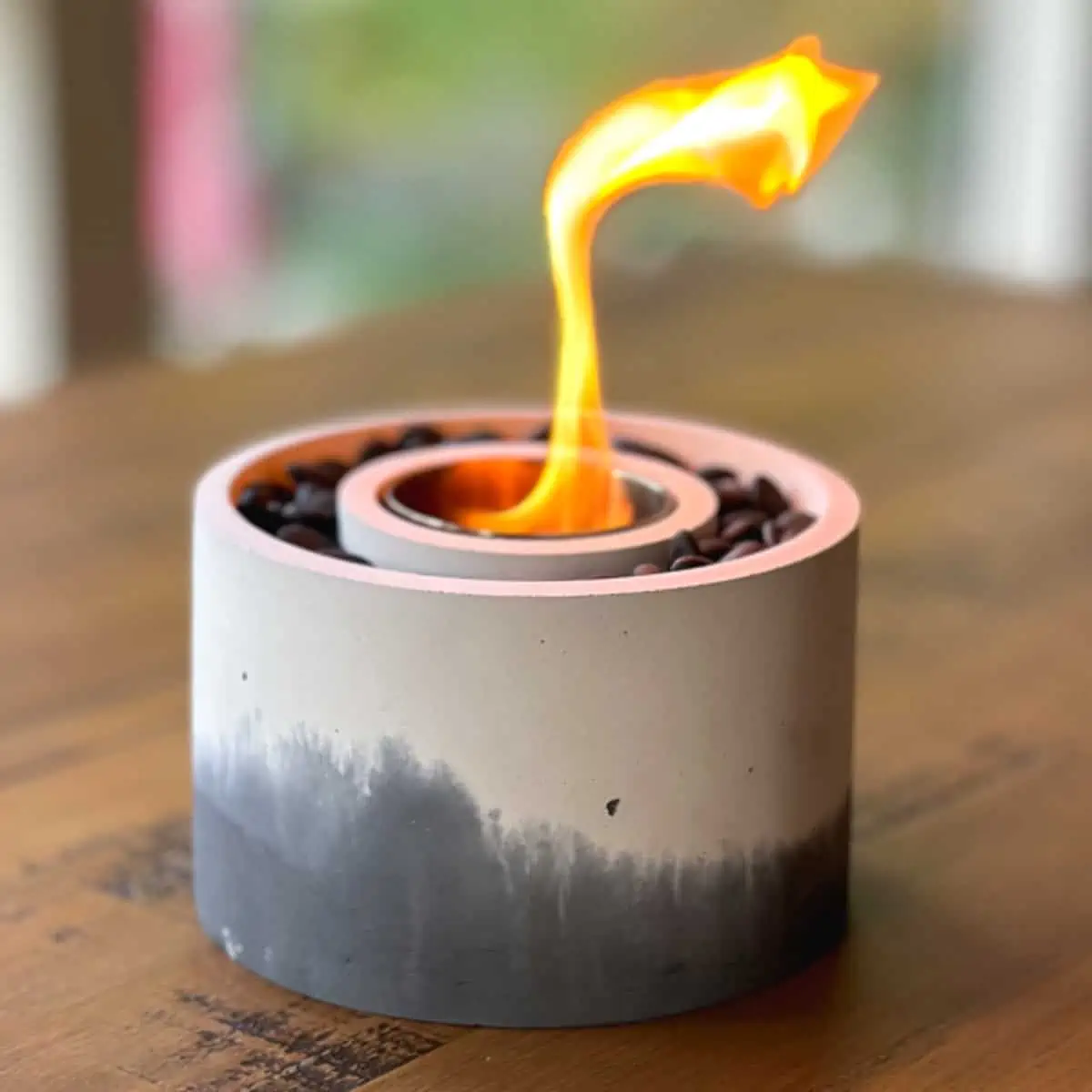
I’m so happy to see the post. Beautifully done and totally on point …. at the end you did the categorisation of trees with different fall leaves colors. So nice. Thank you.
hi would you mind if i did some paintings of the autumn foliage photos for a student exhibit? thanks
Hi,
That should be fine. They aren’t my photos, they are stock photos. But as far as know, I think you can use them to paint from.